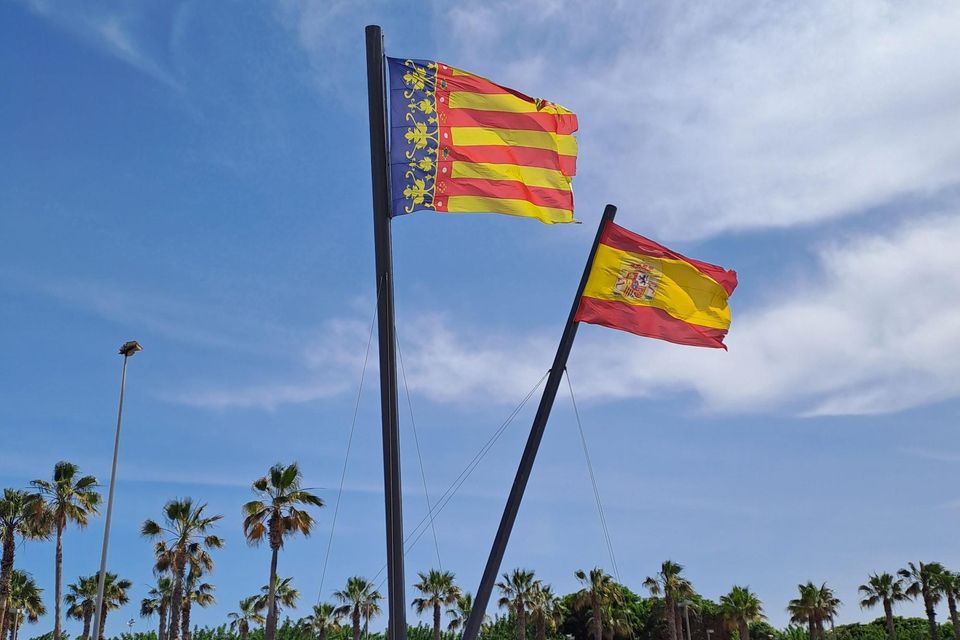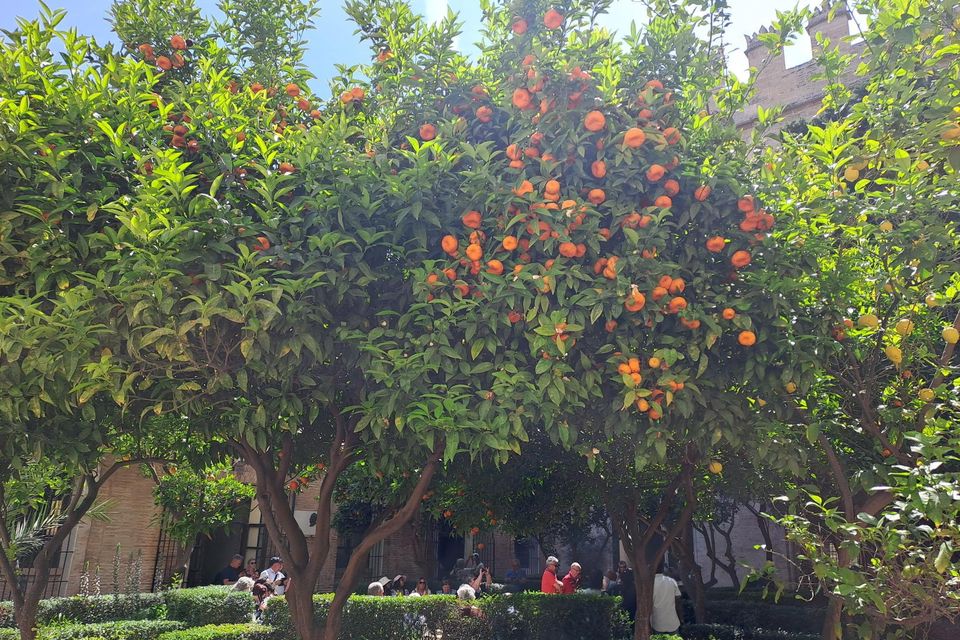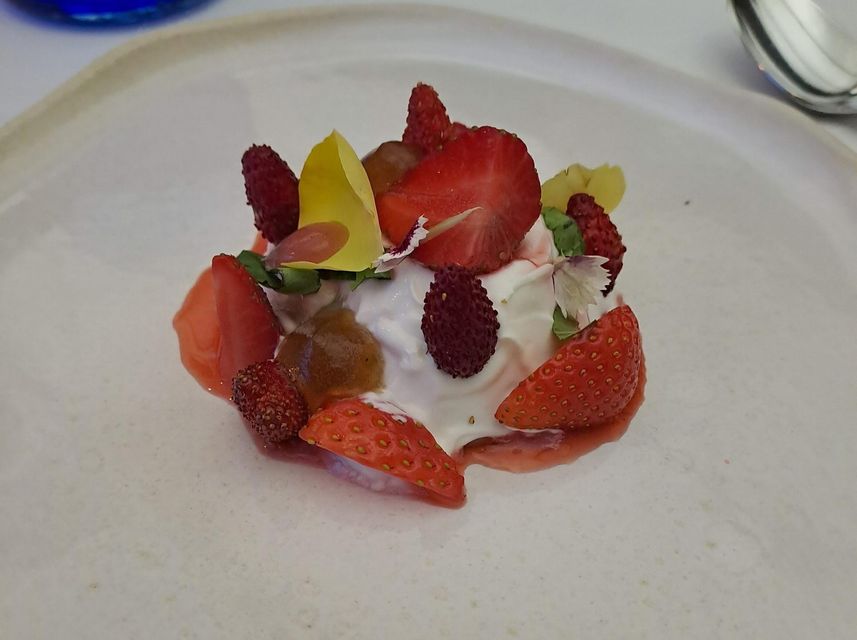From Cork to Valencia, a trip of a lifetime to a city of extra-ordinary intensity
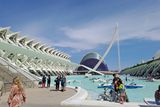
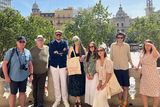


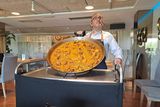

A two-day trip to Valencia on Spain’s Mediterranean coast was all it took to convince me that, despite all of Cork’s many attractions, I’m living in the wrong part of the world.
And I’m not the only one. Apparently the Spanish city has been voted both the best city in the world and also the healthiest in which to live.
And, in further good news, it’s accessible via a Ryanair flight from Cork Airport though, for the sake of the trip I took to sunny Spain, I had to travel via Dublin.
Valencia has everything I need in a city - history, art and culture, the sea, magnificent architecture and easy living in the city centre and food, delicious, food.
Delicious is too small a word to describe Valencia’s gastronomic offering. Gastronomy is both an art and a science in Valencia.
The first evening I arrived, one of an eight strong gathering of journalists from all over Ireland who had been invited on the rarest of things, a media trip, we were whisked by bus from the airport to the hotel and onward to the highest restaurant in the city.
Vertical, as it’s called, is on the ninth floor of one of the city’s most luxurious hotels. From that point you could see a city night-scape of spectacular beauty. We were to be treated to a 14 course meal in honour of a world famous Valencian artist, Joaquin Solara, the ‘master of light’. The chef had composed a menu with fourteen different dishes which told the story of the artist, his origins, his inspirations, his love life, his art.
To sit down to eat a fourteen course meal may seem daunting but some of the plates contained a mere mouthful of food. However some of those mouthfuls were themselves a challenge. For the first course, and before you make assumptions, I am not a gourmand on the scale of Hannibal Lecter, I don’t know whether these were aperatives or amuse bouches or whatever, the first course consisted of two shells perched on a rock, you removed the shell to find a snail like creature was nestling underneath, you lifted the shell, snail and all, and dipped the meaty part in a little pool of pea-green sauce which was also carved into the rock-dish. It was an experience which I doubt I will repeat. The food was delicious, of course, but my palate was not made for this. We ate fish, black and white squid, tuna encased in chocolate, broths and the tiniest meat course imaginable, castanets of lamb (little nibbles of lamb encased in a delicious tempura batter). Carvery it was not.
There I am, second from left, in the scorching historic centre of Valencia in the company of my media trip colleagues.
And, throughout the meal, our giant wine glasses were filled with different wines. When I say filled, the bottom of the glass was covered with maybe a half inch of whatever vintage. And it was more than sufficient.
There was a story behind every morsel, a tale to recount for every sip. The trip to Vertical was magical in every sense - but it left me feeling the desire to be horizontal in my bed as soon as possible. Fourteen courses, paired with wine, are exhausting. Being calorie conscious, as I am, I felt that I burned as much energy as I consumed during that meal. It would be the first of a number of such feasts over our two day trip.
The next morning we were to be up bright and early for a tour of the city’s historic quarter. I wasn’t up as bright and early as my colleagues so I missed the beginning of the tour - but thanks to the wonders of modern technology, a tracking app worthy of James Bond, I was able to catch up with the group fairly quickly in the city’s railway station, a magnificently sun coated building in the centre.
Everywhere we went we were surrounded by history going back to the city’s Moorish and, further back, Roman origins. Valencia was on the famous Silk Road from the Far East and was a European trading hub throughout its history.
Read more
A highlight of that morning’s walking for me was the quick visit to the Mercado Central, an open market very similar to Cork’s English Market. This was an assault on all the senses, the colour, the aroma, the taste, the hubbub of noise. It was irresistible. I could have spent the day there looking around - as it was we were through in a few minutes and despite my promises to myself, I didn’t get back.
By the time we went to lunch, I had 12,000 steps done and it was 28 degrees in the shade. It wasn’t too arduous a tour though it did seem like there was a lot of history packed into it. We were more than ready for a respite and a repast.
Valencia is the birthplace of paella, the rice based dish for which Spain is famous. The city hosts a World Cup of Paella every September for visiting chefs and an Irish cook reached the final last year with a dish comprising of rice, oysters and Guinness.
I’m sure it was delicious as all paella is delicious. Basically anything goes, except chorizo. There should be no pork of any description in paella.
The origins of paella were explained to us by our guide, Miguel of Visit Valencia, who said that it was the meal which the farmer cooked for his wife on the Sunday, when he had a half day from working in the fields.
The traditional Valencian version of paella comprises of chicken, rabbit, broad beans and other vegetables and spices such as paprika and saffron.
A cocktail of strawberries, basil tea and other fruit served at Riff, the Michelin star restaurant.
We would try that Paella Valenciano the following day. For lunch on the first day, it was paella with seafood. And, the tastiest morsels, were, we were told, the soccarat or burnt bits of rice stuck to the bottom of the pan. And that was indeed the case, they were the nicest bit of a dish that I will try to cook at home properly sometime this Summer. (When I say properly, I mean ‘no chorizo’ though I believe myself that paella is so versatile it would work with bacon and cabbage with a bit of HP sauce!)
As Miguel of Visit Valencia explained to us, in medieval times, cities proved their value to the world by building magnificent cathedrals and the like - and Valencia has more than one of those - while in this day and age, the epitome of a city’s cultural prowess is to be able to say that it has a Champions League winning team. The local soccer team was last in the European decider in 2000 and 2001 and lost both finals.
But Miguel wasn’t disheartened. ‘Do you know why Valencia is the best city in the world in which to live?”, he asked us.
“Well to start with we have 330 days of sunshine a year,” he said. “And we can’t even remember when we last saw rain.”
Apparently there had been a brief shower the previous week but coming from the Cork/Kerry border as I do, I wouldn’t really count that.
And he proceeded to recount a long list of reasons why living in Valencia was more than desirable. It was essential. Sure, can’t we work remotely! (That may possible necessitate a conversation with my employers at some stage!).
In fairness, he needn’t have bothered. He had me at 330 days of sunshine. Or before that at the first morsel of food.
The seafront restaurant looked onto a beach of gleaming white sand which seemed to stretch eternally in all directions. We strolled towards the marina which was full of splendid yachts and catamarans - Valencia hosted the Americas Cup a few years ago.
This was the life. I was coated in Factor 50 and wearing a rough and ready Panama hat, badly stained at this stage, I had purchased on line and this was the first time it had seen real sun-protecting action. Despite the heat, I didn’t come home with a tan, or not such that anyone would remark upon, but that’s the middle aged Irish man in me.
The Valencian flag flies alongside the Spanish flag on the beach in Valencia.
In the centre of Valencia, there’s a massive park, the likes of which you would hardly find in any Irish city, least of all, it seems, Cork of the Robot Trees. There’s no robot trees in Valencia - just acres of parkland but right in the middle is the City of Arts and Sciences which is breath-taking in its beauty. It comprises of a series of man made lakes around which people canoe, Zorb or paddle on various crafts (no swimmers). These are surrounded by futuristic and gleaming white buildings seemingly transported from a Star Trek set, such is their futuristic aspect.
At this stage in the proceedings, armed with my phone and the hotel address, I decided to walk it back. Which I did. The heat was fierce but I was more than able for it and strolled in the shade wherever possible. A bottle of water is a necessary accessory on such outings.
Reaching the hotel and having figured out that the mini-bar wasn’t screwed shut, I had a drink and went for a refreshing cold shower. That was all necessary preparation for the evening festivities, a meal in one of Valencia’s Michelin star restaurants. Called Riff, I certainly felt that I could add the ‘raff’!
A visit to a Michelin star restaurant is something I would have never thought possible before visiting Valencia. After all the tasting menu costs approximately €160 - and that’s before you do the wine pairing.
But after this trip, I think I will go the Michelin route again. It’s better to do one Michelin meal. even at the astronomic cost than a year’s supply of fast foods at a fraction of the price.
It seems to me that the recipe for such a high end restaurant is a precise measurement of artistry and a scientific understanding of food. Part of me felt food and wine was wasted on me - but I also felt that I was tasting food I had been eating all my life for the first time.
Again this was a meal with very little meat on the menu. But the slice of lamb that was served was so full of flavour that I couldn’t eat another bite of it. A refreshing ‘Bloody Mary’ - which was tomato from which all the juice had been extracted and the flavour accentuated - looked for all the world like a glass of Cava but tasted so intensely of the freshest, juiciest tomatoes you’ve ever eaten.
It was truly a baptism of fire for the taste buds. Every morsel was a revelation, an introduction to new food never before tasted or a re-introduction to food we’ve been eating all our lives but never before tasted as it should be.
I really can’t find the words to describe some of the dishes served to us - they were beyond description by mere mortals.
As for the drink, before the previous night’s indulgence I hadn’t had a glass of wine for ages and now we were being invited to taste two different vintages of the same wine.
Paella Valenciano, comprising chicken, rabbit, broadbeans, vegetables and spices, and arroz.
Could we tell the difference? Not at all. Could we tell that it was good wine - yes, in the manner that we could sense it wasn’t the normal bottle of Spanish plonk that you’d buy on the way home of a Friday evening.
The restaurant chef was on hand to explain each dish to us and when he wasn’t there, the serving staff were able to give us the details. They were so attentive that, when I laid my hat down by my chair when I sat down, they found a stool for it to perch it on for the three hour plus duration of the meal.
At the end of the 14 courses, there was a final dish of digestifs - which were tiny sweets. One of these was an orange jelly cube. Valencia is the home of oranges as well as paella, earlier that day we came across a grove of orange and lemon trees in the city centre.
That cube of orange jelly small as it was packed a tremendous punch. It was intense, like the sun is intense in the city or the architecture magnificent or the history epic. I wish now I hadn’t eaten it whole and that I could taste it again and again to take me back to that city.
Though we were full to the gills, such is the science of gastronomy as perfected in Valencia, when we left the restaurant, that we were still able to walk the few yards to a nearby pub to go for a drink. It seemed a little like going back in time to when there was a pub life in Ireland as opposed to people peering into their phones and sipping at drinks.
The next day dawned, our last few hours in Valencia before we were to head home. That morning we were to take a visit to the city zoo - or Bio-parc.
While the emphasis of the trip had been on sustainable tourism up to then, and this seemed out of kilter with that, the intention of this element of the trip was to demonstrate how Valencia was ‘family friendly’.
In fairness, it was easily the most impressive zoo/bio-park that I’ve ever visited and while it’s in the middle of the city, Valencia has one of the cleanest atmospheres of any city I’ve ever been in, it seems like you could be in wildest Africa. Lions, giraffes, elephants, monkeys and all sorts of other creatures were on view - just stay back from the ostriches!
I have never been able to get as close to a wild animal as I did in the bio-parc, It was a relaxing tour of a splendid facility and I could easily see my younger self with my younger family spending a pleasant day here.
The final official element of the trip was a visit outside the city to a lake or ‘albufeira’ which is central to the drainage system which irrigates the rice fields around Valencia, the rice fields where the paella ‘arroz’ is grown.
We were taken by boat across the expansive body of water towards a restaurant where we were to taste the local paella.
As we docked a boat containing a company delegation were setting off, their vessel came with its own wine cooler and the staff at the restaurant ensured they had platters of tapas to take with them, to shorten the journey.
Valencia, where the oranges come from.
The Paella Valenciano comprises of arroz, chicken, broad beans and, ahem, rabbit. And this was finally where I said no more. I took a dainty fork full of rice and then tried a bit of the rabbit. And it was definitely not for me.
So I sipped wine for the remainder of the meal and was happy not to have overindulged. I was still running on last night’s magnificent meal after all.
When I returned home and stepped on the scales once again, I had put up a pound, approximately, during my trip.
For what I had eaten, it seemed a small price to pay!
The last few hours in Valencia were spent wandering around the city’s avenues and narrow streets, searching for appropriate presents to bring home and, finally, a bar to savour with my media colleagues the highlights of the past few days.
Valencia is definitely a city to which I would return with my wife and family and there’s plenty more to discover there.
The real attraction of the city is that it’s a real home for people - I didn’t see one derelict building during the entire trip. That’s not something you could say about a visit to Irish cities which have been left go rack and ruin by the authorities and merchant classes.
There are bicycle lanes and greenways throughout the city - there’s traffic but it’s nowhere near the levels in Irish cities. We have so much to learn from Valencia. A city is a place in which to live, not merely a place in which to work, sleep and eat.
As an Irish speaker I was intrigued to learn on my last day a little bit about the Valencian language - signage in the city is mostly bilingual, Valencian and Spanish.
There’s an intensity about Valencia which has to be experienced to be appreciated. A two day visit was merely an aperatif. I will have to back for the full paella another time. And I will.
I along with my journalist colleagues was hosted by Visit Valencia for the two days we spent in the city. We stayed in the Hotel Dimar, a four star hotel in the city centre. We flew from Dublin on Ryanair. Flights are available from Cork and can range from €60 one way.
You can purchase a ‘Visitor’ card in Valencia which gives you free access to attractions and also to the excellent public transport system!



